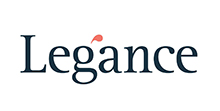
Italy
Environmental, Social & Governance
1 . How is “ESG” in your jurisdiction defined in a corporate/commercial context, and what are its major elements?
Italian ESG regulation is based, primarily, on European legal sources of direct or indirect application in Italy (i.e., Regulations or Directives).
However, there is also important domestic legislation. For example, Italy is the first European country to regulate a Benefit Corporation model, the “Società Benefit” (Law 208/2015). This is a legal status (and not a legal form) that can be obtained by any “traditional” company, regardless of its operating sector, provided its bylaws include the purposes of pursuing a common benefit as well as distributing profits (as well as other legal requirement).
The major characteristics of ESG in Italy are:
- The bond with the EU regulatory framework, which acts as a catalyst for domestic regulatory development.
- The focus on disclosure and risk management, with an increasing importance placed on due diligence and governance matters.
- The high regulation for financial intermediaries (hedge funds, banks, etc.), which is boosting ESG adoption amongst the corporate sector through the investment/credit value chain.
- The link with the third-sector (recently reformed through Legislative Decree 117/2017 and made of non-profit entities), which is traditionally oriented to the pursuit of general interest purposes and the inclusion of stakeholders. These themes are now expanding to the market-driven private sector (profit-making enterprises), whether on a voluntary or regulatory basis.
2 . What, if any, are the major laws/regulations in your jurisdiction specifically related to ESG?
The following domestic legislation directly address ESG:
- Interministerial Decree of March 29, 2022, which defines how to prepare the biennial report regarding male and female employees in public and private companies with more than 50 employees.
- Law 162/2021, on amendments to the Code on Equal Opportunity (Legislative Decree 246/2005, as complemented by Legislative Decree 198/2006), and other provisions on equal opportunities between men and women in employment.
- Decree of the Italian Minister of Labour and Social Policy of 23 July 2019, with guidelines for the implementation of systems for assessing the social impact of the activities carried out by third-sector entities.
- Decree of the Italian Minister of Labour and Social Policy of 4 July 2019, on the adoption of guidelines for the preparation of the social report of third-sector entities.
- Legislative Decree 117/2017, Code of Third-sector Entities.
- Legislative Decree 112/2017, Revision of the discipline of Social Enterprises (as complemented by Legislative Decree 95/2018).
- Legislative Decree 254/2016 implementing Directive (EU) 2014/95 on non-financial reporting (NFRD).
- Law 208/2015, establishing the Italian Benefit Corporation (Società Benefit).
- Decree-Law 179/2012, establishing the Innovative Start-up with Social Vocation (SIAVS).
The following EU legislation, directly or indirectly, addresses ESG and directly applies in the domestic context:
- Directive (EU) 2022/2464 amending Regulation (EU) 537/2014, Directive 2004/109/EC, Directive 2006/43/EC and Directive 2013/34/EU, as regards corporate sustainability reporting (CSRD).
- Commission Delegated Regulation (EU) 2022/1288 supplementing Regulation (EU) 2019/2088 with regard to regulatory technical standards specifying the details of the content and presentation of sustainability information (RTS).
- Commission Delegated Directive (EU) 2021/1270 amending Directive 2010/43/EU as regards the sustainability risks and sustainability factors to be taken into account for Undertakings for Collective Investment in Transferable Securities (UCITS).
- Commission Delegated Directive (EU) 2021/1269 amending Delegated Directive (EU) 2017/593 as regards the integration of sustainability factors into the product governance obligations.
- Commission Delegated Regulation (EU) 2021/1257 amending Delegated Regulations (EU) 2017/2358 and (EU) 2017/2359 as regards the integration of sustainability factors, risks and preferences into the product oversight and governance requirements for insurance undertakings and insurance distributors and into the rules on conduct of business and investment advice for insurance-based investment products.
- Commission Delegated Regulation (EU) 2021/1256 amending Delegated Regulation (EU) 2015/35 as regards the integration of sustainability risks in the governance of insurance and reinsurance undertakings.
- Commission Delegated Regulation (EU) 2021/1255 amending Delegated Regulation (EU) No. 231/2013 as regards the sustainability risks and sustainability factors to be taken into account by Alternative Investment Fund Managers.
- Commission Delegated Regulation (EU) 2021/1253 amending Delegated Regulation (EU) 2017/565 as regards the integration of sustainability factors, risks and preferences into certain organisational requirements and operating conditions for investment firms.
- Regulation (EU) 2020/852 on the establishment of a framework to facilitate sustainable investment, and amending Regulation (EU) 2019/2088 (EU Taxonomy).
- Regulation (EU) 2019/2088 on sustainability-related disclosures in the financial services sector (SFDR).
- Regulation (EU) 2017/1991 amending Regulation (EU) 345/2013 on European venture capital funds and Regulation (EU) 346/2013 on European social entrepreneurship funds.
- Regulation (EU) 2017/821 regarding supply chain due diligence obligations for importers of tin, tantalum and tungsten, their ores and gold originating from conflict-affected and high-risk areas.
- Regulation (EU) 346/2013 on European social entrepreneurship funds (EuSEF funds).
In addition, the Corporate Sustainability Due Diligence Directive (CSDD) is expected. Drafted by the EU Commission, this Directive proposal aims to establish due diligence obligations to prevent, cease or minimize potential negative impacts on the environment and human rights.
3 . What other laws/regulations in your jurisdiction touch on ESG themes?
The following domestic legislation, indirectly, addresses ESG:
- Decree Law 77/2021, on the governance of the National Recovery and Resilience Plan (PNRR).
- Law 157/2019 amending the Code of Public Contracts (Legislative Decree 50/2016), providing reward criteria mechanisms for entities that measure their impact through the “external evaluation standard” of the Società Benefit.
- Legislative Decree 231/2001 with regulations on the administrative liability of legal persons, companies and associations, including those without legal personality.
Art. 47 of Decree Law 77/2021 introduces incentive requirements in public tenders, aimed at promoting youth entrepreneurship, gender equality and the hiring of young people and women. The Decree also introduces special measures on renewable sources, energy efficiency, the promotion of a circular economy and combating hydrogeological instability.
Law 157/2019 represents a key step towards greater diffusion of social and environmental impact assessments. For example, the Decree rewards companies that measure their ESG impact, since it includes impact assessment among the criteria of the National Anti-Corruption Authority (ANAC) for the determination of a company rating — a tool to compare the reputation of economic operators in public procedures. Moreover, the Decree provides that the Public Administration can award a higher score in calls for tenders if:
- the companies carry out a social impact assessment; or
- the offer concerns “goods, works or services with a lower impact on health and the environment, including goods or products from short or zero kilometer supply chains”.
Legislative Decree 231/2001 introduced a tool (the 231 model) aimed at mitigating the risk of the commission of certain crimes by some individuals in the interest or to the benefit of the legal entity. The internal control system implemented through this 231 model can also contribute, indirectly, to the pursuit of sustainability goals, at least in managing the risks of negative impacts. For example, the model can be used to prevent the commission of environmental crimes while encouraging “sustainable” conduct.
4 . What, if any, litigation or enforcement activity has your jurisdiction seen related to ESG?
The only case of ESG litigation involved accusations of greenwashing and misleading advertising. On 25 November 2021, the Court of Gorizia issued a “precautionary” order against a company found guilty of promoting products with unsubstantiated “green” characteristics. The Court prohibited the company from disseminating the misleading advertising and enjoined to publish the order on the company’s website.
With respect to public enforcement, it is worth noting that:
- The Antitrust Authority (AGCM) has been entrusted with the role of supervising, preventing and sanctioning misleading green claims and greenwashing.
- In April 2022 Bank of Italy issued an initial set of expectations on the integration of climate and environmental risks into business strategy, governance, control and risk management systems and market reporting of supervised financial intermediaries, followed by a note, issued on December 2022, containing further indication.
The National Commission for Companies and the Stock Exchange (CONSOB) has initiated a process to align the Intermediaries Regulation and the Issuers Regulation with some of the EU main legal acts on ESG.
5 . What are the major non-law/regulatory drivers of ESG trends and developments in your jurisdiction?
Soft non-binding laws
Italy has ratified numerous international conventions that represent the highest non-binding ESG framework, such as the:
- Universal Declaration on Human Rights;
- United Nations Framework Convention on Climate Change;
- ILO Conventions;
- 2030 Agenda for Sustainable Development (SDGs); and
- Paris Agreement.
There are also soft laws and standards to which several Italian companies adhere to in order to align their business model to global ESG trends, such as the:
- UN Guiding Principles of Business and Human Rights (UN Guiding Principles);
- UN PRI;
- OECD Guidelines for Multinational Enterprises (OECD Guidelines); and
- UN Global Compact.
The SFDR and EU Taxonomy recall some of the above instruments, making them enforceable. For example, Art. 18 of the EU Taxonomy considers as “minimum safeguards” the alignment of a company with the OECD Guidelines and the UN Guiding Principles.
Stakeholders
ESG issues in Italy have become a trend and are constantly in the spotlight. In particular:
- Retail investors are increasingly engaging in ESG, as also highlighted at the EU level by Eurosif in a survey on the SRI industry (2018). Consistently, the EU Commission has provided for an integration of sustainability factors, risks and preferences into certain organizational requirements and operating conditions for investment firms (see Commission Delegated Regulation (EU) 2021/1253).
- Institutional investors are contributing to the spread of ESG practices with their own (dynamic and context-specific) views about what ESG factors are relevant and what constitutes “impact”. A survey conducted in May 2022 by Assofondi Pensione found that 68% of Italian pension funds have a public commitment to adopt strategies consistent with ESG factors. This figure is up from the previous year (50%). Another survey (November 2021) by the Italian Sustainable Investment Forum (ItaSIF) made clear that exclusions and ‘best-in-class’ are the most widely used ESG strategies by pension fund investors, and revealed a growing interest in engagement and proxy voting (following the transposition of the Shareholders Rights II Directive).
- Private companies are strongly promoting ESG practices. For example, through the UN Global Compact Network Italia (UNGCN Italia), which has among its founders leading companies from various industrial sectors including ENI (oil and gas), Aeroporti di Roma (travel and leisure), Andriani (food and beverage) and Legance – Avvocati Associati (legal services). This network fosters the adoption of 10 principles relating to human rights, labour standards, environmental protection and anti-corruption among Italian companies.
- The Italian government, driven by EU policies (such as the Next Generation EU program for financing EU economic recovery through the dual ecological and digital transition), set forth the PNRR, which is structured around digitalization and innovation, ecological transition and social inclusion, with a clear ESG focus. The reforms and investments envisaged by the plan aim to promote sustainable development with positive long-term impacts for the community and the environment through specific “ESG-oriented” resource allocation criteria.
Different motivations are driving such stakeholders, for example:
- creating shared ESG standards and best practices;
- achieving the SDGs;
- ensuring a just transition; and
- countering greenwashing practices.
National Contact Points (NCPs)
National contact points of international organizations are also active in promoting ESG in Italy. Alongside the UNGCN Italia, there are, for example:
- the Italian OECD National Contact Point for Responsible Business Conduct; and
- the Social Impact Agenda for Italy (SIA), the Italian National Advisory Board (NAB) of the Global Steering Group for Impact Investments (GSG).
6 . Are the laws, regulations and obligations highlighted in Question 2 primarily related to corporate disclosure?
There is a primary focus within the current regulatory framework on ESG disclosure at the corporate and investment fund level. In general, it is possible to distinguish among ESG laws that aim to regulate:
- Legal forms or statuses of entities characterized by a business model that balances profit with the pursuit of common benefit goals (i.e., the discipline on Social Enterprises, Società Benefit, SIAVS, EuSEF funds).
- Impact/ESG measurement and reporting, in an attempt to disseminate and standardize these practices (i.e., the rules on the non-financial reporting or the biennial report on gender balance, as well as the RTS).
- Other key ESG procedures (i.e., ESG risk management, sustainability-related disclosures, integration of sustainability factors into product governance for investment firms, due diligence obligations for some importers and so on).
- Specific hot ESG topics (i.e., the Equal Opportunity Code).
- General ESG framework (i.e., the framework under the EU Taxonomy to facilitate sustainable investment).
Reporting
The SFDR provides for sustainability-related disclosure in pre-contractual documents and periodic reports, as well as on the web. Such disclosures follow the detailed provisions of the RTS.
With regard to the NFRD, non-financial statements may be contained in a specific section of the management report or in a separate report. In order to promote better usability of the information, it is possible to use the so-called “incorporation by reference technique”. Pending the drafting of specific EU reporting standards, the most widely used tool is the GRI Standard. Finally, a key aspect is the analysis of dual materiality: although not currently required by NFRD (but will be by CSRD), the main reporting standards include this aspect.
Società Benefit must draw up an annual report (based on a legal standard) on the achievement of ESG purposes and on the “impact” generated. The financial statements shall include such a report.
SIAVS must file, every year, the “social impact description document” (based on a reporting standard of the Ministry of Economic Development) with the Chamber of Commerce and publish it on their website.
Social Enterprises must file the “social report” (based on a reporting standard of the Ministry of Labour and Social Policies) with the Business Register and publish it on their website.
7 . Which sectors are most impacted by ESG in your jurisdiction? How significant is ESG investment in your jurisdiction?
The consideration of ESG factors, once an option, is now an obligation for an increasing number of sectors.
As already noted, one of the most affected sectors is financial intermediaries, such as private equity firms, hedge funds, asset managers and banks (especially with respect to ESG reporting and risk management).
In addition, asset managers and companies involved in the real estate industry are increasingly adopting sustainability certifications (i.e., the Leadership in Energy and Environmental Design (LEED) and the Building Research Establishment Environmental Assessment Method (BREEAM)) and integrating ESG factors into business models.
For sectors relying heavily on supply-chains, such as fashion and automotive, ESG criteria appears to be expanding beyond the organisational and business models of single companies, stimulating suppliers, partners and institutions to adopt sustainability-oriented approaches.
8 . What are the trends in your jurisdiction regarding ESG governance?
Increasingly, a widespread practice within medium to large companies is the appointment of ESG officers (such as a Chief Sustainability Officer or a Chief Impact Officer for Società Benefit). This is often coupled with the establishment of ESG committees, to advise the board on ESG issues and manage functions such as ESG measurement and reporting, as well as ESG risk management.
This appears to be an established trend, considering that — as highlighted by a 2018 study of the CSR Manager Network — 80% of listed companies already have an internal board committee with delegated responsibility for sustainability, and 15% have established a specific committee dealing exclusively with sustainability.
In addition, with respect to governing bodies, there appears to be a particular attention to gender balance and directors’ remuneration, which is often linked to the achievement of ESG targets.
9 . To what extent are ESG ratings or ESG benchmarks relied upon in your jurisdiction?
ESG ratings and standards are popular in Italy, as they are key tools to determine the sustainability level of investments and companies.
However, the multitude of these instruments, which follow different rules and principles, makes data comparability and interpretation difficult. Consequently, there is an increasing reliance on legal tools provided by the EU to classify economic activities as sustainable (i.e., EU Taxonomy) and to make proper disclosure (i.e., SFDR and RTS).
10 . What is the role of the private markets versus public markets in driving ESG developments in your jurisdiction?
Both private and public markets are key players in achieving the transition to a sustainable economy. In particular, the EU strategy is focused on leveraging the role played by large private and public companies, requiring extensive and detailed disclosure requirements (i.e., under the SFDR, the NFRD and, looking forward, the CSRD proposed directive). More specifically — in accordance with such laws — banks, insurance companies, listed companies and financial intermediaries should report detailed sustainability-related information. As a consequence, many Italian companies are increasingly integrating ESG factors into their business strategies.
Public companies are also asked to comply with the Code of Corporate Governance for Listed Companies. Such Code requires the board to promote the so-called “sustainable success”, intended as a long-term strategy of value creation, for shareholders, that shall also take into account the interests of a company’s stakeholders.
A noteworthy case study is that of Reti S.p.A., the first listed company with the legal status of “Società Benefit” and in possession of the B Corp certification. Its ESG-oriented business model has contributed to a successful placement of shares in 2020 that registered a total demand of about 1.3 times the initial offering.
Certainly, an increasing number of both public and private companies are adopting ESG policies, procedures, certifications and legal statuses, aiming to prevent and minimize the company’s environmental and social risks, along with generating ESG value. Such a trend is both market- and regulatory-driven.
11 . What are the major challenges in terms of compliance for companies under ESG obligations?
Several challenges exist with respect to ESG effectiveness and integrity which ultimately facilitates greenwashing practices, for example:
- Access to ESG data: the Italian ecosystem is still strongly composed of SMEs for which the cost related to measuring non-financial data represents a barrier that affects the ESG disclosure of the entire value chain.
- Quality of non-financial data: unlike financial data, this is often not validated by audit processes, with the risk for the market to have unreliable data of a very low quality.
- Misalignment of sustainability disclosure standards: a global phenomenon, due to a lack (in some cases), of interoperability of the international organizations involved in the development of such standards.
- Measurement of “S” factors: still underdeveloped compared to “E” factors.
- Uncertainty around “G” factors: given an unclear definition of what might be good governance practices.
- Legal uncertainties: as the regulatory framework is still in its first steps, integration and interpretation by the EU and domestic authorities, is required to ensure uniformity in application.
- Economic instability: which tends to reinforce profit maximization logics at the expense of proper management and integration of ESG risks and opportunities.
A first response to these challenges comes from regulatory developments, especially at the EU level. The SFDR, the EU Taxonomy, the CSRD and the proposed CSDD directive go in this direction, addressing some of the mentioned barriers.
12 . What information sources are most relevant for ESG considerations in your jurisdiction?
A key source of ESG information is national supervisory authorities, which contribute (through surveys and reports) to disseminating knowledge with respect to ESG market practices and the evolution of regulatory frameworks. Numerous indications are coming, for example, from CONSOB and the Bank of Italy, partly because of the greater prominence, for now, of the ESG phenomenon with respect to the financial intermediary sector.
In addition, academic institutions play a significant role in the promotion and evolution of ESG practices. As an example, the Polytechnic University of Milan, University of Bologna, Polytechnic University of Turin and Sapienza University of Rome have teams of researchers and lecturers focused on different aspects of sustainability and social innovation. As a further example, TIRESIA, an international research centre promoted by the School of Management of the Polytechnic University of Milan, pursues scientific excellence in the field of social impact innovation and sustainability.
Important contributions to the ESG expansion also come from third-sector entities and important national networks, such as:
- Social Impact Agenda for Italy.
- Torino Social Impact, a network also supported by Turin’s municipal administration.
- Cottino Social Impact Campus, the first campus in Europe exclusively dedicated to the culture of social impact.
- Forum per la Finanza Sostenibile, a non-profit association promoting ESG criteria in financial products.
- Assobenefit, the association for Società Benefit in Italy.
13 . Has your jurisdiction developed a Taxonomy related to ESG?
The EU Taxonomy (Regulation (EU) 2020/852) directly applies in the national context and establishes an ESG framework to facilitate sustainable investment.
This legislation:
- defines the main criteria for environmentally sustainable economic activities;
- provides specific transparency obligations (in addition to those under the SFDR) to financial market participants;
- provides similar obligations for undertakings (those subject to non-financial reporting pursuant to article 19(a) or article 29(a) of Directive 2013/34/EU); and
- mandates the European Commission to extend the scope of such taxonomy beyond environmentally sustainable economic activities, covering other sustainability objectives, such as social objectives.
14 . What does the future hold for ESG in your jurisdiction?
Looking forward, we can expect the following trends and developments.
In the short term:
- Initial misalignment with the RTS (entered into force the 1st of January 2023), which financial intermediaries will have to comply with regarding sustainability-related disclosures.
- Increase in the adoption of ESG safeguards and strategies by market players (although this phenomenon may be slowed by economic instability that pushes for profit maximization and short-termism), as, for example, a further proliferation of funds qualified under Art. 8 of SFDR.
- Additional focus of EU and national supervisory authorities with respect to ESG issues, through further guidance, surveys and first assessments/inspections.
- Increased concern for social issues and respect for human rights at a corporate level.
- Persistence of a misalignment with other jurisdictions in the development of ESG matters, with implications for multinational entities operating in Italy that will have to align with ESG requirements imposed by the domestic regulatory system.
In the medium term:
- First cases of “greenwashing” and ESG litigation, mediation and enforcement by authorities.
- Emergence of more competitive entities that will have adopted more rigorous and robust approaches to ESG matters, such as through the implementation of ad hoc safeguards and appropriate measurement and reporting systems.
In the long term:
- Entry into force of the proposed CSDD Directive and further development of the EU and Italian regulatory framework on ESG, with eventually the definition of a globally aligned ESG framework of standards mandatory for an increasing number of recipients and intended to govern several corporate aspects (i.e., ESG Due diligence, risk management, sustainable governance, ratings, labelling, disclosure, etc.).
- Emergence of more competitive entities that will have anticipated the entry into force of norms and the development of best practices in the ESG area.
3-6 PQE Corporate M&A Associate
Job location: London
Projects/Energy Associate
Job location: London
3 PQE Banking and Finance Associate, Jersey
Job location: Jersey


 Fabio Gallo Perozzi
Fabio Gallo Perozzi Federico Longo
Federico Longo Giuseppe Taffari
Giuseppe Taffari Roberto Randazzo
Roberto Randazzo

